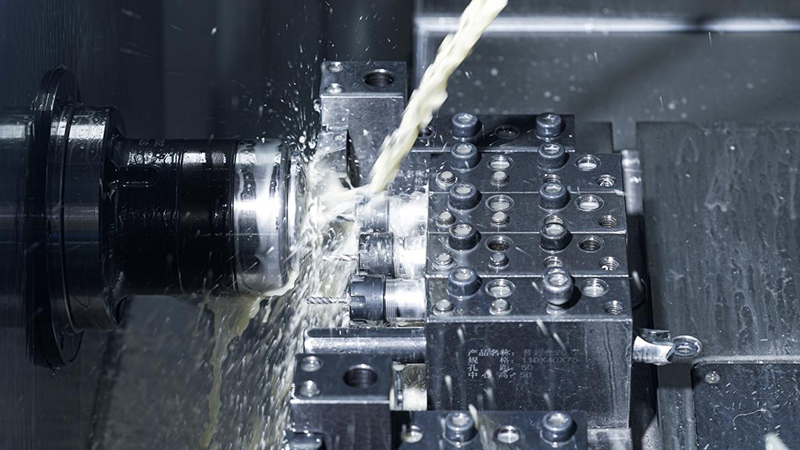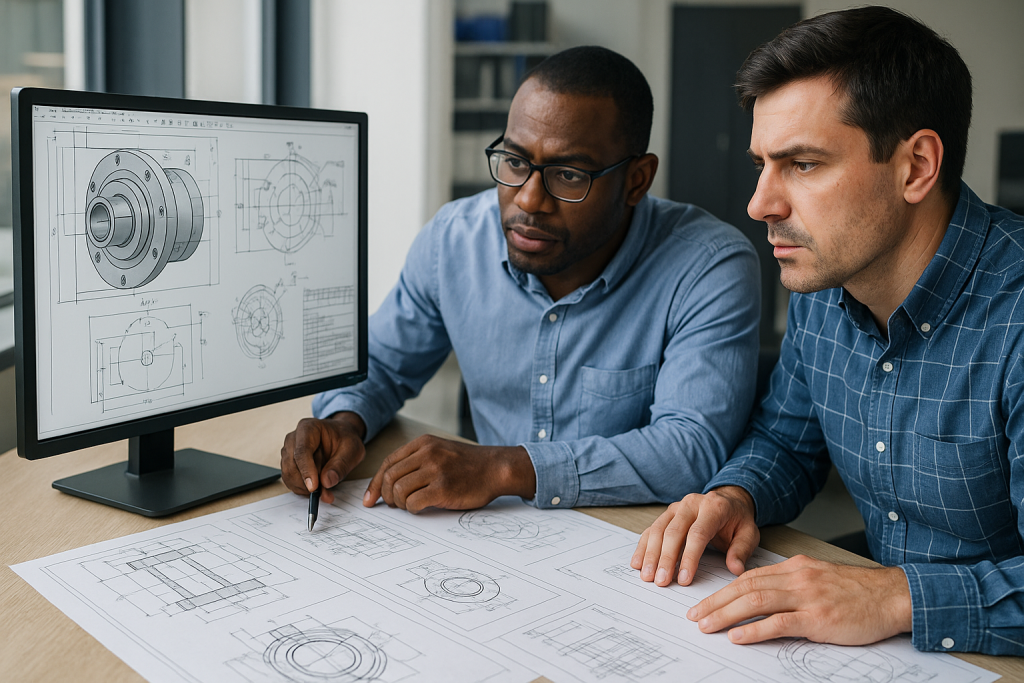
In today’s rapidly advancing world of robotics, custom-machined parts are playing a pivotal role in transforming innovative ideas into high-performance, real-world applications. From autonomous drones to surgical robots and warehouse automation systems, the demand for precision, customization, and speed in manufacturing robotic components has never been greater.
At the heart of this transformation is Boona Prototypes, a trusted name in rapid prototyping and custom CNC machining services that enable engineers to turn complex concepts into reality.
I. The Role of Rapid Prototyping in Robotics
Robotic systems require iterative testing and fast design cycles to meet performance and safety standards. Boona Prototypes supports this need with end-to-end rapid prototyping solutions, including:
-
CNC machining for tight-tolerance metal parts
-
3D printing (SLA, SLS, MJF, FDM) for quick iterations
-
Vacuum casting for functional prototypes and enclosures
-
Sheet metal fabrication for structural and housing components
These services help robotics engineers iterate faster, reduce time-to-market, and validate designs before mass production.
II. Precision Engineering for High-Performance Robots
Robotic systems depend on micron-level precision, friction-optimized surface finishes, and specific mechanical properties. Boona’s CNC machining services deliver:
| Material | Tolerance | Surface Finish | Application |
|---|---|---|---|
| Aluminum 6061-T6 | ±0.01 mm | Ra 0.8 μm | Structural frames, lightweight arms |
| Stainless Steel 304 | ±0.01 mm | Ra 1.2 μm | Precision joints, sensor mounts |
| Titanium Grade 5 | ±0.005 mm | Ra 0.4 μm | Surgical and aerospace robotic parts |
| PEEK | ±0.02 mm | Ra 1.6 μm | High-temperature, chemical-resistant use |
| Carbon Fiber Sheet | ±0.05 mm | Ra 3.2 μm | Ultralight drone parts |
These components often form the core of robotic actuators, gearboxes, sensor housings, and end effectors.
III. Accelerating Innovation Through Custom Machining
Unlike off-the-shelf parts, custom-machined components are optimized for each robotic system’s unique size, geometry, and performance requirement. With multi-axis CNC machining (up to 5-axis), Boona enables:
-
Complex 3D geometries for robotic joints and movement systems
-
Reduced assembly time with integrated features
-
Lower weight without compromising strength
These benefits are critical for mobile robotics, surgical precision tools, and AI-powered collaborative arms.
IV. Seamless Integration with Robotic Platforms
Boona Prototypes doesn’t just deliver parts—it delivers ready-to-integrate solutions. By leveraging design for manufacturability (DFM) analysis and production-quality standards, they help robotic startups and enterprises scale efficiently.
Example Use Cases:
-
Medical robots: Titanium grippers machined to sub-10μm tolerances
-
Logistics automation: High-durability aluminum arms with anodized coating
-
Agricultural drones: Carbon-fiber rotors with low-weight optimization
V. From CAD to Deployment: Fast and Reliable
The journey from digital design to real-world deployment is fast and seamless with Boona’s support. Their streamlined workflow ensures delivery of parts within 2–5 business days, depending on complexity.
| Process Stage | Lead Time | Notes |
|---|---|---|
| CAD File Submission | Instant upload | Accepts STP, STEP, STL, IGES |
| Quotation & DFM Review | Within 12 hours | Free quote + manufacturability feedback |
| Machining / Prototyping | 2–5 business days | Material & surface finish options available |
| QC and Inspection | Included (ISO 9001) | Dimensional and surface finish reports |
| Global Shipping | 3–7 business days | Worldwide delivery with tracking |
VII. Quality You Can Trust
All parts from Boona Prototypes are produced in ISO 9001-certified facilities and undergo rigorous inspection. Their surface finishing options include anodizing, powder coating, bead blasting, and passivation — essential for robotic parts exposed to friction, corrosion, and high wear.
Conclusion: Shaping the Future of Robotics
Custom-machined parts are more than components—they are enablers of robotics innovation. With high-precision services like those provided by Boona Prototypes, robotics engineers can build smarter, faster, and more reliable machines.
Whether you’re prototyping a surgical robot or scaling up a fleet of autonomous vehicles, Boona offers the precision machining, material diversity, and speed to keep you ahead of the curve.
Ready to prototype your next robotic breakthrough?
Visit Boona Prototypes and get your instant CNC quote today.
FAQs
1. Why are custom-machined parts important for robotics?
Custom-machined parts ensure that robotic components are precisely tailored to the mechanical, dimensional, and functional needs of each system. This leads to better performance, reliability, and faster innovation compared to generic off-the-shelf parts.
2. What materials are best suited for robotic components?
Common materials used in robotics include:
-
Aluminum (lightweight, strong)
-
Stainless Steel (durable, corrosion-resistant)
-
Titanium (high strength-to-weight ratio)
-
PEEK (chemical resistance, high temperature)
-
Carbon Fiber (ultralight, high stiffness)
Boona Prototypes offers all these options for CNC machining. Learn more about their material options here.
3. How accurate are custom-machined parts for robotics?
Boona Prototypes offers tolerances as tight as ±0.005 mm and surface finishes down to Ra 0.4 µm, which are ideal for high-precision robotic applications like actuators, joints, and end effectors.
4. How fast can I get a custom-machined robotic part?
With Boona’s rapid prototyping services, parts can be manufactured and shipped within 2–5 business days depending on complexity and materials.
5. Can I prototype robotic parts with 3D printing first?
Yes! Boona Prototypes supports 3D printing technologies like SLA, SLS, and FDM to help you validate design concepts before switching to CNC machining or low-volume production.
6. Do you offer multi-axis CNC machining for complex robotic designs?
Absolutely. Boona provides 5-axis CNC machining, allowing the creation of complex geometries such as curved channels, undercuts, and intricate sensor enclosures with minimal setups.
7. Are the machined parts inspected for quality and precision?
Yes. All parts go through thorough inspection procedures. Boona Prototypes operates ISO 9001-certified facilities and provides dimensional and surface finish reports upon request.
8. Can I combine different manufacturing techniques for my robot project?
Definitely. Many robotic projects use a combination of CNC machining, 3D printing, and vacuum casting depending on functional needs, cost, and turnaround. Boona helps you choose the optimal solution through DFM analysis.
9. What surface finishes are recommended for robotics parts?
Surface finishes like anodizing, passivation, and bead blasting are commonly applied to reduce friction, enhance corrosion resistance, or improve appearance. You can explore Boona’s full list of finishing options here.
10. How can I get started with Boona Prototypes for robotic part manufacturing?
You can upload your CAD files (STP, STEP, STL) directly on the Boona Prototypes website to get a fast quote and feedback on manufacturability, materials, and lead time.



